While Madrid lacks the architectural flamboyancy of Barcelona, or the long history of cities like Cordoba or Granada, the capital does have its own distinctive style. A certain something that suddenly strikes you when you turn a corner on a street lit up by the setting sun. While it’s impossible to sum up exactly what that style is, I’m making a small stab in that direction with a post about five architects that were hugely influential during their lifetimes, leaving a lasting imprint on the skyline.
Juan de Herrera: 1530-1597
Herrera was the disciple of Juan Bautista de Toledo, the principle architect of both El Escorial and the Palace of Aranjuez. When his Italian-educated mentor died in 1567, Juan defied expectations, completing both these buildings by taking away rather than adding ornamentation to their facades. His was a stripped-down austere style characterised by bare granite exteriors topped with geometrical slate towers. A style that reflected the character of King Philip II, a deeply religious monarch who hated to dress in the flashy garments that were usually worn by men of his stature and instead went around in plain black outfits. Pleased with Herrera’s work, Philip commissioned the Plaza Mayor from him. Unfortunately, Herrera died just as the project got underway. The rest was built by Juan de Mora. Nevertheless, the square which has been reconstructed several times after fires, is still known for its distinctive Herrerian design.
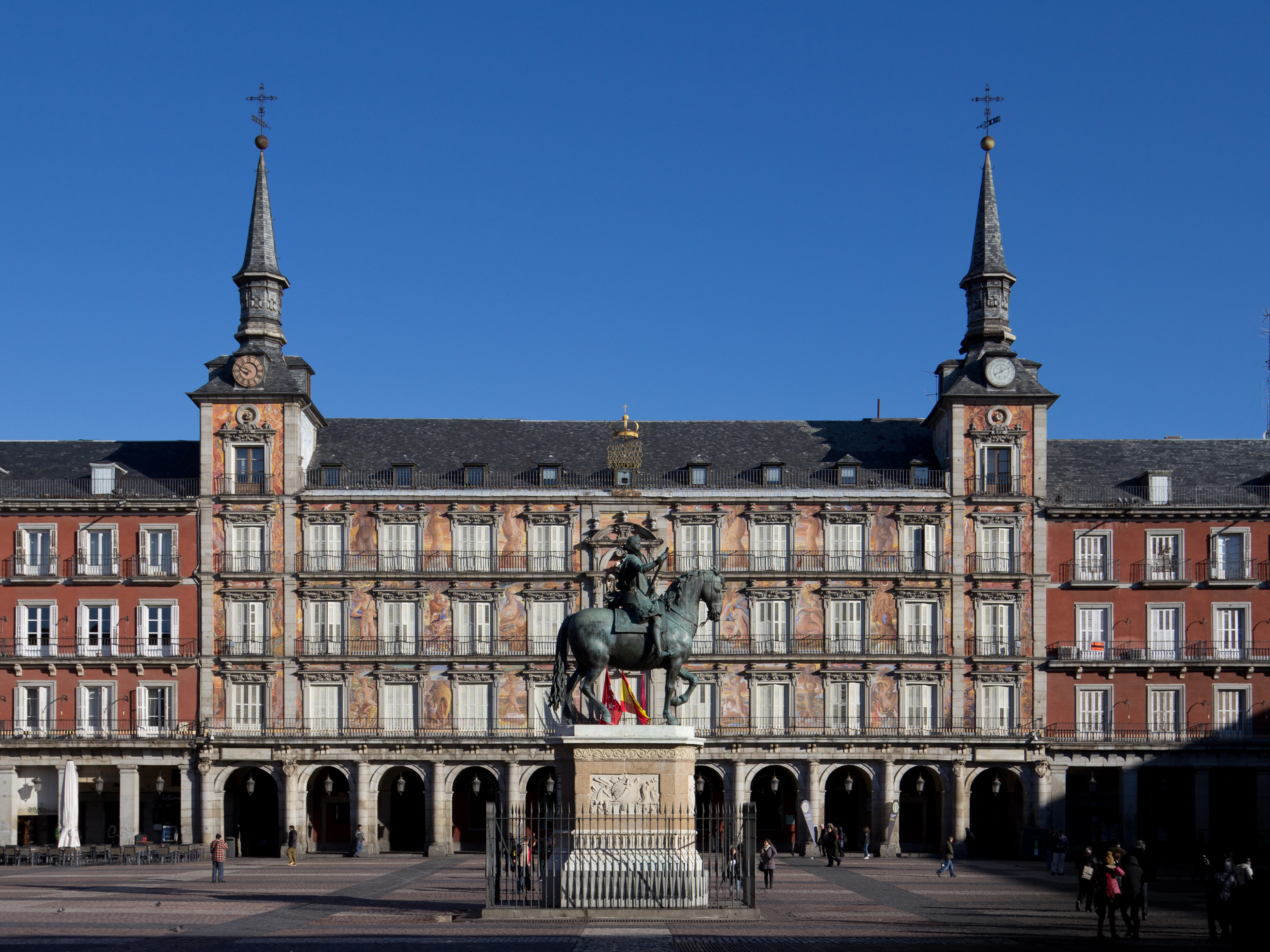
The austere style continues to be popular in Madrid and can be seen all over the city. Franco, in particular, who styled himself as a bit of a successor to Philip II, was a big fan of Herrerian architecture and the former headquarters of the Spanish Air Force stands out as a prime example from that rather gloomy period in recent history.
Pedro de Ribera: 1681 – 1742
The backlash to Juan de Herrera’s style came when the Bourbons took over from the Habsburgs in 1700. The new king, Philip V had been born in Versailles and hated the austere Herrerian aesthetic. To stamp his very different personality on the city, he commissioned a splendid new barracks from the Spanish architect Pedro de Ribera. Being the largest building in Madrid at that time, the Cuartel de Conde Duque was an important commission for the architect.
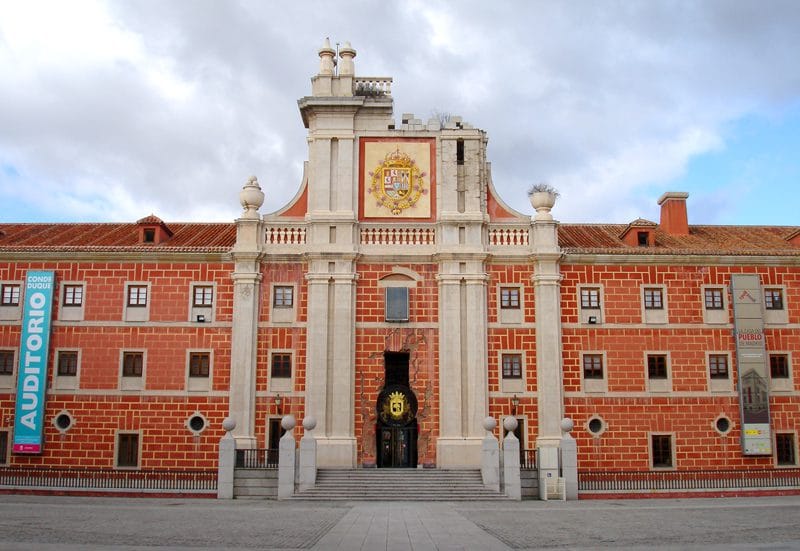
Pedro de Ribera had also been a disciple of a famous architect, namely José Benito de Churriguera. Characterised by flamboyant stucco ornamentation the Churringueresque look had been very popular. However, it’s Ribera who wound up designing most of the iconic baroque buildings of this period within Madrid. Besides the barracks, he is responsible for the Bridge of Toledo, the Royal Hospital of San Fernando which is now home to the Museum of Madrid, and many other buildings within the city.
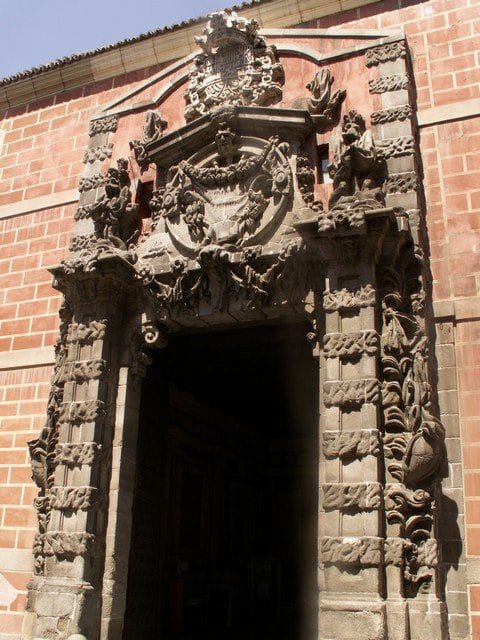
While many working class Madrileños were not fond of this new Frenchified influence in the city, Ribera’s ornate stucco facades have their roots in a mudejar tradition that had been influential ever since the Arabs arrived in Spain.
Juan de Villanueva (1739 – 1811)
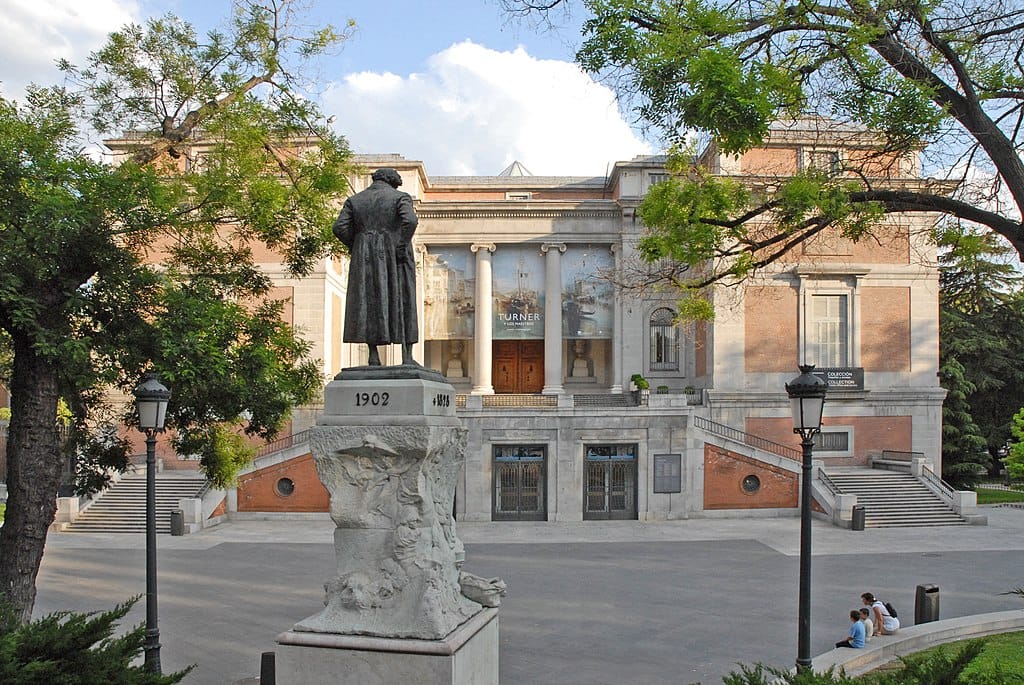
While Ribera designed the doorway of the Museo de Madrid, which at that time was the Hospice of San Fernando, the building itself was the work of Juan de Villanueva, another in-demand 18th-century architect. Working under the enlightened rule of Charles III, the neo-classical architect is most famous for his less ornate work along the Paseo del Prado, which includes the Jardin Botanico and the Prado Museum as well as the Royal Observatory just by Retiro Park. Sadly, both the Prado and the Observatory suffered under Napoleon’s invasion with the former being used as a barracks and the latter losing its telescope in the conflict.
Ventura Rodríguez (1717 – 1785)
Rodríguez was arguably the most sought-after Spanish architect in the 18th century and though the big jobs on the Palace had been given to Italian architects, Rodríguez was commissioned to work on its Royal Chapel. One of Carlos III‘s favourite architects, he was also given commissions along the Paseo del Prado and these include the fountains of Cibeles and Neptune.

Another iconic structure every Marilenian is familiar with is his Puente de Segovia. In addition to this, he was responsible for the renovation of the Monasterio de la Encarnación, one of central Madrid’s 6 closed convents, an institution famous for its yearly miracle, for the Colegiata de San Isidro where the corpse of San Isidro is kept and for the Palacio de Liria, the huge mansion owned by the powerful Alba family that now sits next to a metro station named after the architect himself.
Antonio Palacios: 1874–1945
Palacios put himself on the map as a young architect when he his partner Joaquín Otamendi won a competition to design the Palacio de Comunicaciones (now the Ayuntamiento in Cibeles). This building, originally made to house Madrid’s post office, telegraph and telecommunications, is still one of the city’s most iconic buildings.
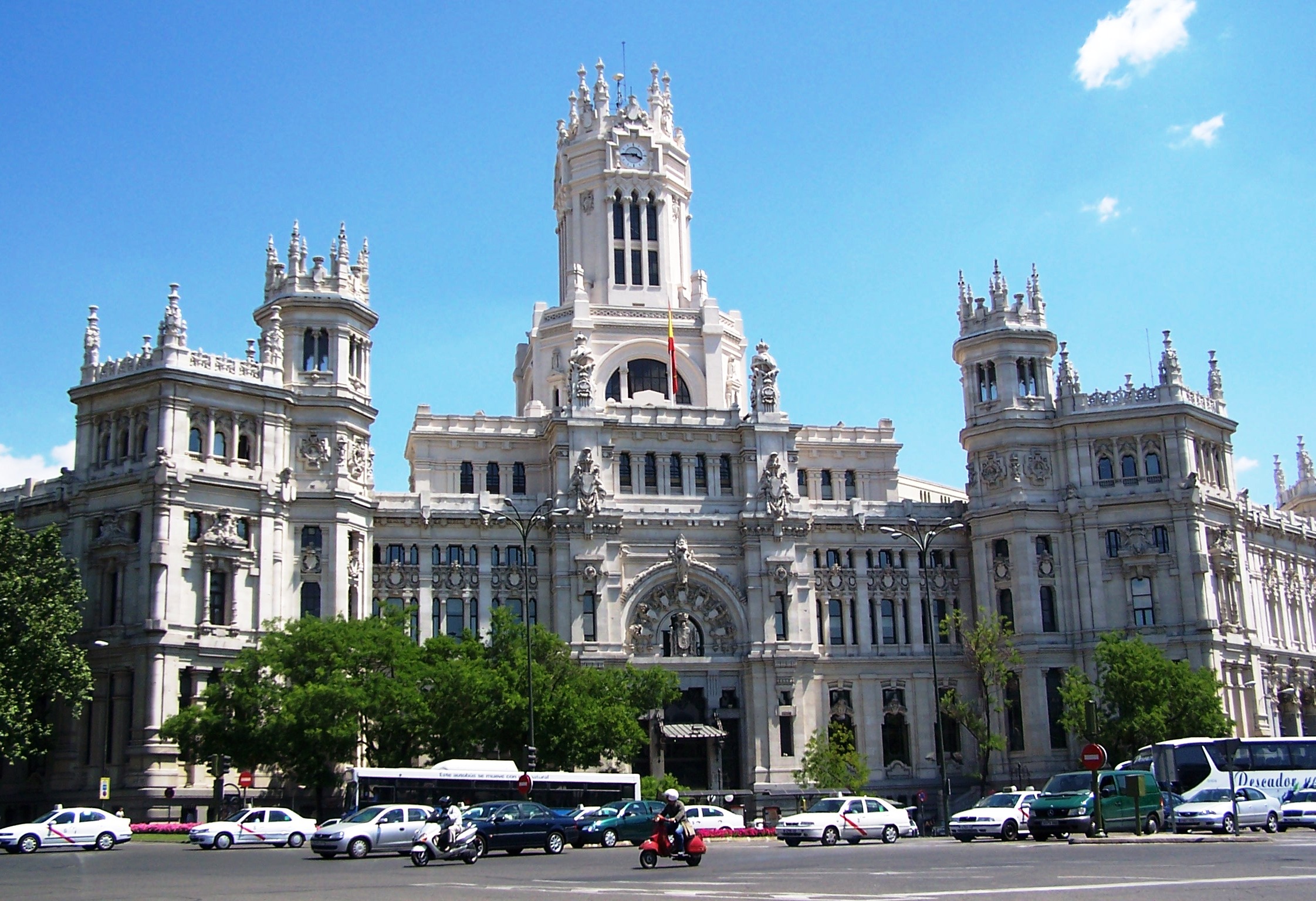
There’s a neo-classical grandeur about it combined with a modern feel that can be felt throughout his work from the Circulo Bellas Artes to the Instituto Cervantes (formally the Banco Español del Río de la Plata). A master of the mashup, though his grand buildings have a modern American feel, he even throws in a bit of neoplateresque decoration, giving his facades a distinctively Spanish appearance.
![4177857952_6ed80ca162_o_thumb[1]](https://themakingofmadrid.com/wp-content/uploads/2019/04/4177857952_6ed80ca162_o_thumb1.jpg)
Palacio’s work shines on not just in Madrid’s skyline, but also underground. He was responsible for the lovely tiled interiors of Tirso de Molina station as well as for designing the original logo for Madrid’s metro. If you’re a train geek you should definitely check out the amazing Nave de Motores power station and Chamberi station both now museums and both designed by Palacios.
If you are venturing into Madrid and would like to know a little bit about the history of the city, how about booking yourself in for a unique walking tour with me, the writer of The Making of Madrid?
Footnote: Madrid is of course filled with countless buildings in a variety of different styles, so it’s impossible to sum up its character with just three names. Which is why I’m interested to find out which buildings you think typify the city. Drop me a line and let me know!
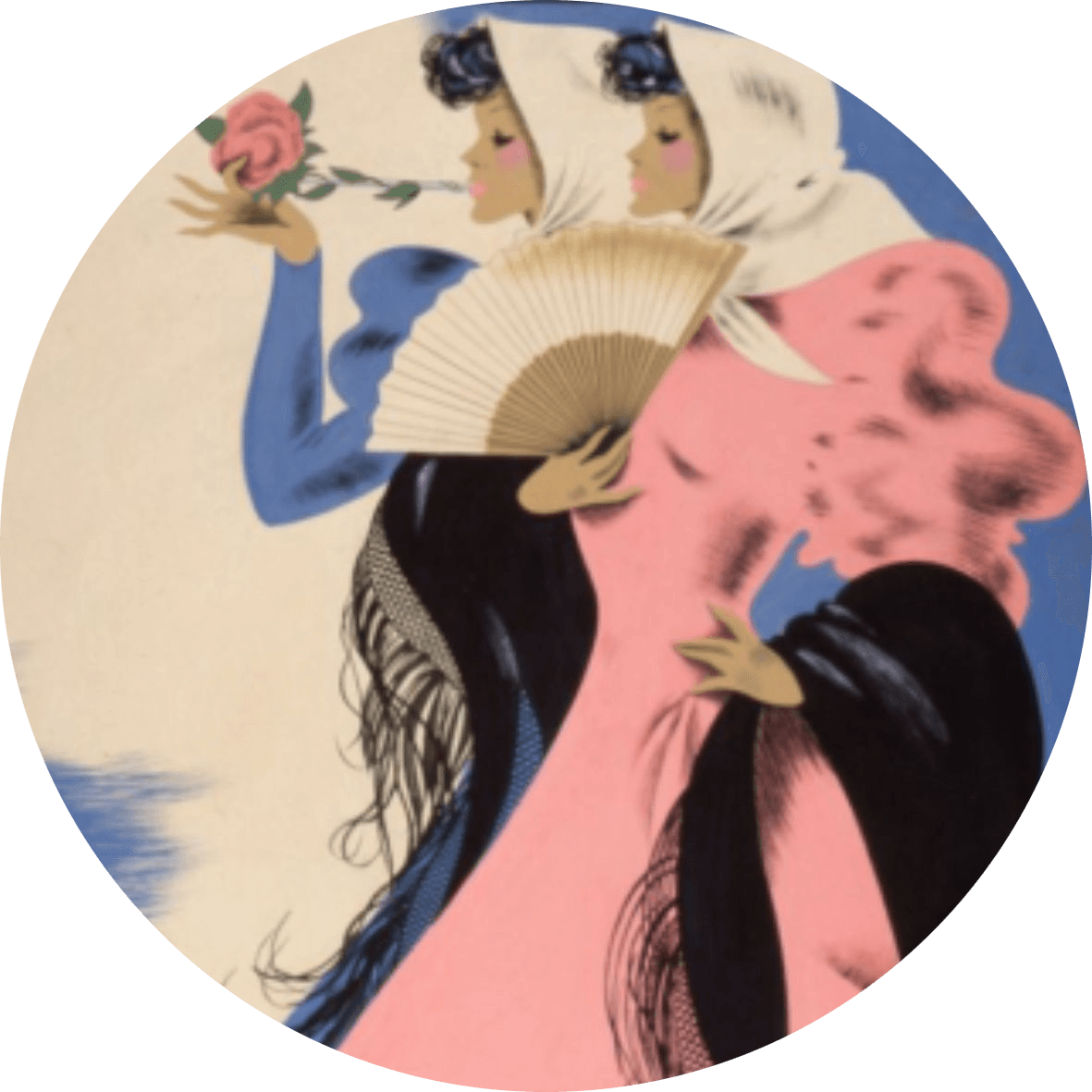





Pingback: Hidden Corners of Malasaña - The Making of Madrid
Pingback: What is Madrid made of? - The Making of Madrid
Pingback: Madrid off the Beaten Track - The Making of Madrid
Pingback: The Story Behind Madrid’s Historic Doors - The Making of Madrid